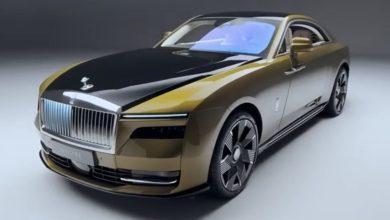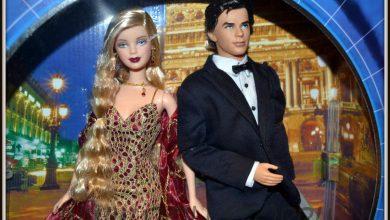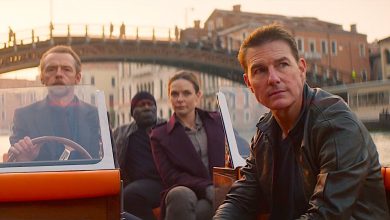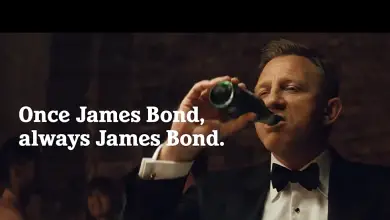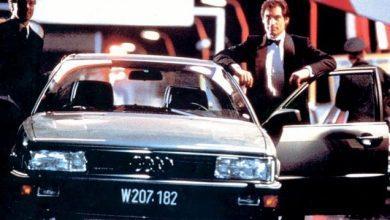Who Are the Graphic Designers Behind James Bond?
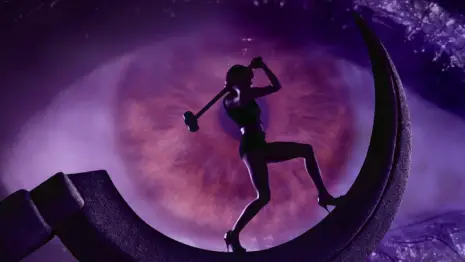
The world of James Bond is renowned for its thrilling action, intriguing storylines, and captivating characters. However, behind the scenes, there is a team of talented graphic designers who contribute their artistic prowess to create the visually stunning world of 007. In this article, we will explore the graphic designers behind James Bond movies and their integral role in shaping the franchise’s visual identity. From the groundbreaking title sequences to the creation of logos, on-screen graphics, and props, these designers bring their creative vision and attention to detail to every aspect of the Bond universe. Join us as we uncover the names, techniques, and collaborations that have made these graphic designers an essential part of the James Bond legacy.
Key Takeaways
- The graphic designers behind James Bond movies play a crucial role in shaping the visual aesthetics of the franchise, contributing to the overall atmosphere and identity of each film.
- Maurice Binder revolutionized title sequence designs in Bond films, setting the standard for captivating and innovative intros that combine typography, visuals, and storytelling.
- Daniel Kleinman continued the legacy, infusing his own creative vision into the title sequences of subsequent Bond films.
- Graphic designers contribute beyond title sequences, creating logos, promotional materials, on-screen graphics, and props that enhance the authenticity and visual experience of the Bond universe.
- These designers collaborate closely with other creative professionals, including directors, production designers, and visual effects artists, to ensure a cohesive visual language throughout the films.
The Role of Graphic Designers in James Bond Movies
Before we dive into the talented individuals themselves, it’s essential to understand the significant impact graphic designers have on the James Bond franchise. These designers are responsible for creating visually stunning and memorable elements that contribute to the overall atmosphere and identity of each film.
From the iconic opening title sequences, featuring stylish typography and striking visuals, to the intricate details of the spy gadgets and high-tech interfaces seen throughout the movies, graphic designers bring their artistic prowess to every aspect of the Bond universe. They collaborate closely with production designers, art directors, and visual effects artists to ensure a cohesive visual language that captures the essence of the Bond brand.
Maurice Binder: Pioneering Title Sequence Designs
One name that stands out when discussing the graphic designers behind James Bond is Maurice Binder. Binder, known for his groundbreaking work on the Bond title sequences, revolutionized the way films introduced their credits. His designs, characterized by bold typography, dynamic visuals, and captivating imagery, set the standard for future title sequences in the Bond series and beyond.
Binder’s work can be seen in many classic Bond films, including “Goldfinger,” “Diamonds Are Forever,” and “Live and Let Die.” His innovative approach to blending elements of art, technology, and storytelling in these sequences has left an indelible mark on the world of graphic design in cinema.
Daniel Kleinman: Continuing the Legacy
Following in the footsteps of Maurice Binder, Daniel Kleinman has become a prominent figure in the realm of James Bond graphic design. Kleinman took over the reins of creating the Bond title sequences with the film “GoldenEye” and has since been involved in numerous subsequent installments.
Kleinman’s style builds upon Binder’s legacy while infusing his own creative vision into the sequences. He combines sleek typography, stunning visuals, and seamless transitions to captivate the audience from the very beginning of each film. Some of his notable contributions include the memorable title sequences for “Casino Royale,” “Skyfall,” and “Spectre.
Expanded Universe: Design Beyond Title Sequences
While the title sequences often take the spotlight, graphic design in James Bond movies goes beyond these iconic intros. Various other design elements contribute to the overall visual experience, including the creation of logos, posters, promotional materials, and on-screen graphics.
For instance, the renowned British graphic design firm, R/GA, played a crucial role in developing the logo for the Quantum organization, a recurring antagonist in several Bond films. Their distinctive design, featuring interconnected circles, conveys a sense of mystery and intrigue synonymous with the Bond universe.
Additionally, graphic designers collaborate with the art department to create visually compelling props, such as Bond’s gadgets, passports, and forged documents. These meticulous designs add depth and authenticity to the world of espionage, enhancing the audience’s immersion in the films.
Collaborations and Recognition
Graphic designers in the James Bond franchise often work closely with other creative professionals to ensure a cohesive visual experience. Their collaborations with directors, production designers, cinematographers, and visual effects artists result in a harmonious blend of design and storytelling.
While graphic designers in film often work behind the scenes, their contributions are recognized and celebrated within the industry. The work of Maurice Binder, Daniel Kleinman, and other talented designers has earned critical acclaim and numerous accolades, showcasing the importance of their role in shaping the visual identity of the James Bond films.
FAQ
1. What skills do graphic designers behind James Bond movies possess?
The graphic designers behind James Bond movies possess a wide range of skills that contribute to their success in shaping the visual aesthetics of the franchise. First and foremost, they have a strong foundation in graphic design principles, including typography, color theory, composition, and visual storytelling. These skills enable them to create visually striking and cohesive designs that align with the overall narrative and brand identity of James Bond.
In addition to technical skills, these designers also possess a keen eye for detail and a deep understanding of the Bond universe. They meticulously research and analyze the historical context, cultural references, and thematic elements of each film to ensure that their designs align with the specific time period and atmosphere portrayed in the movie. This attention to detail helps to create an immersive experience for the audience.
Furthermore, the graphic designers behind James Bond movies often have a strong grasp of emerging design trends and technological advancements. They stay updated on the latest software tools, digital techniques, and visual effects to push the boundaries of their designs and deliver cutting-edge visuals that captivate the audience.
2. How do graphic designers contribute to the creation of title sequences in James Bond movies?
Graphic designers play a vital role in the creation of title sequences in James Bond movies. They collaborate closely with directors, producers, and creative teams to develop a visual concept that sets the tone for the film. The designers start by analyzing the script, identifying key themes, motifs, and symbols that can be translated into visual elements.
Once the concept is established, the graphic designers begin the process of crafting the title sequence. They carefully select typography styles, colors, and visual elements that reflect the essence of the film and create a sense of intrigue. Through meticulous planning, storyboarding, and prototyping, they ensure that the sequence flows smoothly and engages the audience from start to finish.
Graphic designers also collaborate with animators, motion graphics artists, and visual effects teams to bring their designs to life. They oversee the animation process, ensuring that each frame aligns with the desired aesthetic and narrative. By seamlessly integrating typography, imagery, and motion, the designers create visually stunning title sequences that have become synonymous with the James Bond franchise.
3. How do graphic designers contribute to the creation of logos and promotional materials in James Bond movies?
Graphic designers have a significant impact on the creation of logos and promotional materials in James Bond movies. They work closely with marketing teams, production designers, and art directors to develop logos that embody the essence of the film and contribute to its branding.
The designers begin by conducting extensive research on the film’s themes, characters, and storyline. This research informs their design decisions and ensures that the logos align with the film’s narrative. They carefully select typography, colors, and visual elements that evoke the desired emotions and convey the unique identity of the film.
Once the logo is finalized, graphic designers collaborate with marketing teams to incorporate it into various promotional materials. They create visually compelling posters, banners, and advertisements that attract the audience’s attention and generate excitement for the film. By employing their expertise in layout design, composition, and visual hierarchy, the designers ensure that these promotional materials effectively communicate the film’s key messages and capture the interest of potential viewers.
4. How do graphic designers contribute to the creation of on-screen graphics and props in James Bond movies?
Graphic designers make significant contributions to the creation of on-screen graphics and props in James Bond movies. They collaborate closely with production designers, art directors, and visual effects teams to develop visually compelling designs that enhance the authenticity and immersive nature of the Bond universe.
For on-screen graphics, graphic designers create interfaces, data visualizations, and digital displays that appear in various technological devices and vehicles throughout the films. They carefully consider the film’s setting, time period, and narrative to design graphics that align with the overall aesthetic and provide critical information to the audience. These designs often require a balance between functionality and visual appeal to ensure they serve their narrative purpose while engaging the viewers.
Regarding props, graphic designers bring their expertise in design and attention to detail to create authentic-looking passports, documents, and spy gadgets. They research historical references, analyze real-world designs, and collaborate with prop masters to develop visually convincing and functional props that align with the film’s storyline. These meticulously crafted designs add depth and realism to the Bond universe, enriching the audience’s cinematic experience.
5. Are there specific design techniques or styles commonly used by graphic designers in James Bond movies?
Yes, graphic designers in James Bond movies often employ specific design techniques and styles to create a cohesive visual aesthetic. One notable technique is the use of sleek and sophisticated typography, which adds a touch of elegance and sophistication to the designs. The typography choices often reflect the time period, style, and atmosphere of the film, further enhancing the immersive experience.
Another common design technique is the use of dynamic compositions and visual storytelling. Graphic designers utilize strategic placement of images, text, and graphic elements to guide the viewer’s attention and convey key messages. These compositions contribute to the overall visual impact of the film and create a memorable viewing experience.
In terms of styles, the Bond franchise has embraced a modern and minimalist approach while still maintaining a sense of timeless sophistication. Clean lines, bold colors, and striking visuals are often utilized to create a visually captivating and contemporary look. This style complements the high-tech world of espionage and reinforces the iconic status of James Bond as a stylish and suave secret agent.
6. Do graphic designers collaborate with other creative professionals in the James Bond movie production?
Yes, graphic designers in James Bond movies collaborate extensively with other creative professionals involved in the production. They work closely with directors, production designers, cinematographers, visual effects artists, and art directors to ensure a cohesive visual experience throughout the film.
The collaborative process starts with discussions and brainstorming sessions where designers share their ideas, concepts, and visual references with the team. They take into consideration the director’s vision, the production designer’s overall aesthetic, and the cinematographer’s lighting and camera angles to create designs that align with the film’s creative direction.
Throughout the production, graphic designers maintain open lines of communication with other departments. They provide design assets and specifications to the visual effects team, ensuring seamless integration of their graphics into the film. They also collaborate with art directors to maintain consistency in the visual style and ensure that their designs harmonize with the film’s sets, costumes, and overall production design.
By working closely with these creative professionals, graphic designers contribute their unique perspective and expertise to the collaborative effort of bringing the world of James Bond to life on the big screen.
7. Are there any specific challenges faced by graphic designers in James Bond movies?
Yes, graphic designers in James Bond movies face several unique challenges in their work. One of the significant challenges is striking the right balance between innovation and tradition. While the Bond franchise is known for its iconic visual style, designers must find ways to push boundaries and introduce fresh elements without straying too far from the established aesthetic. It requires a delicate blend of creativity and respect for the franchise’s heritage.
Another challenge is meeting the demands of a fast-paced production schedule. James Bond movies often have tight deadlines, and designers must deliver high-quality designs within these constraints. They need to efficiently manage their time, collaborate effectively with other departments, and maintain attention to detail to meet the film’s visual requirements while working under pressure.
Additionally, designers must navigate the challenges of creating designs that resonate with global audiences. James Bond movies have a vast international fan base, and the designs need to appeal to viewers from diverse cultural backgrounds. It requires designers to incorporate universal visual language, cultural sensitivity, and global design trends into their work to ensure broad appeal and understanding.
8. What kind of research do graphic designers conduct for James Bond movies?
Graphic designers in James Bond movies conduct thorough research to inform their design decisions and ensure authenticity in their work. They delve into various aspects, including historical references, cultural contexts, and technological advancements relevant to the film’s setting and time period.
Designers research the specific time period in which the film is set to understand the visual aesthetics, fashion trends, and design elements prevalent during that era. They analyze architecture, interior design, and graphic design styles from that period to incorporate appropriate visual references into their work.
Furthermore, graphic designers study cultural symbols, iconic landmarks, and historical events associated with the film’s location. This research helps them create designs that reflect the cultural context and resonate with the audience familiar with those references.
In terms of technological advancements, designers keep abreast of the latest innovations in graphic design, visual effects, and digital interfaces. This research allows them to incorporate cutting-edge design elements and technology into their work, ensuring that the film’s visual representation aligns with contemporary expectations.
By conducting extensive research, graphic designers gain valuable insights that inform their design choices and enable them to create visually compelling and contextually accurate designs for James Bond movies.
9. Do graphic designers behind James Bond movies have any notable collaborations outside the franchise?
Yes, many graphic designers behind James Bond movies have notable collaborations outside the franchise. These designers often have extensive experience working on other film projects, advertising campaigns, and branding initiatives.
For example, Maurice Binder, known for his iconic work on the Bond title sequences, also contributed his creative talent to various other films, including “Charade,” “Zulu,” and “Dr. No.” His distinctive style and innovative approach to title sequence design made him a sought-after collaborator in the industry.
Similarly, Daniel Kleinman, who took over the Bond title sequences from Maurice Binder, has worked on numerous other projects beyond the Bond franchise. His creative vision and expertise in motion graphics have made him a highly regarded designer, and he has lent his talents to films, music videos, and television commercials for various clients.
These collaborations beyond the James Bond movies showcase the versatility and talent of graphic designers, highlighting their ability to adapt to different visual styles and storytelling contexts.
10. How have the contributions of graphic designers influenced the legacy of James Bond movies?
The contributions of graphic designers have had a profound influence on the legacy of James Bond movies. Their designs have become an integral part of the franchise’s visual identity, capturing the essence of espionage, sophistication, and adventure associated with James Bond.
The groundbreaking work of designers like Maurice Binder and Daniel Kleinman in creating iconic title sequences has set a new standard for the film industry. Their designs have not only become synonymous with the Bond franchise but have also influenced title sequences in other films, television shows, and media.
Additionally, the meticulous attention to detail and authenticity brought by graphic designers have elevated the overall production value of James Bond movies. Their designs, whether in the form of on-screen graphics, props, or promotional materials, contribute to the immersive experience and reinforce the believability of the Bond universe.
Furthermore, the designs created by graphic designers have become iconic symbols in popular culture. The Bond logo, title sequences, and visual motifs have transcended the films themselves, becoming recognizable and highly regarded design elements that evoke the excitement and allure of the Bond franchise.
Conclusion
The graphic designers behind James Bond movies are the unsung heroes who bring a touch of artistry, style, and innovation to the franchise. From the groundbreaking title sequences to the intricate details of the Bond universe, their designs play a pivotal role in captivating audiences and immersing them in the world of 007.
Through the visionary work of Maurice Binder, Daniel Kleinman, and the collaborations with other creative professionals, the graphic designers continue to shape the visual aesthetics of James Bond films, ensuring that each installment remains visually stunning and timeless. Their contributions serve as a testament to the power of design in creating unforgettable cinematic experiences.



